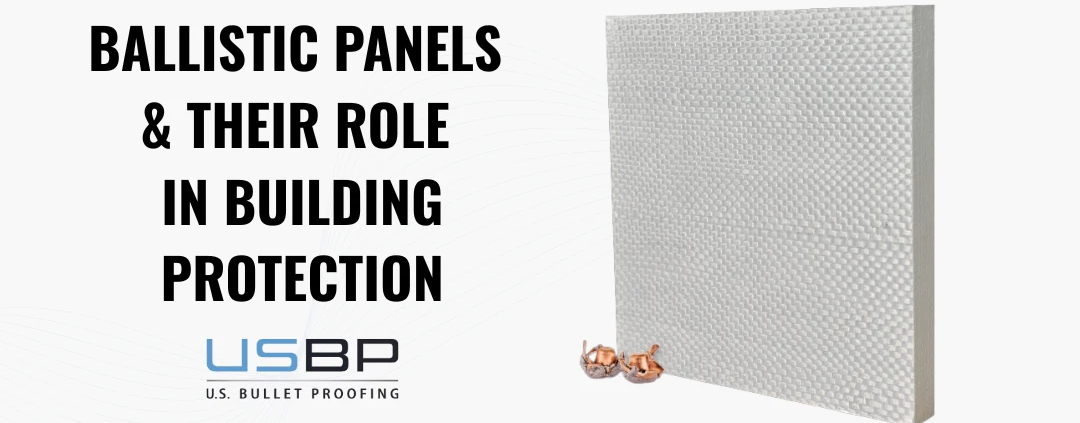Ballistic Panels & Their Important Role in Building Protection
Modern security threats require more than cameras and access controls; ballistic panel building protectionoffers a physical safeguard against firearm attacks, creating stronger barriers in critical areas like government facilities, schools, financial institutions and corporate offices.
At its core, ballistic panel protection refers to wall, ceiling or structural panels manufactured from materials designed to resist ballistic threats. These panels absorb and disperse the energy of bullets, preventing penetration and protecting occupants. Unlike surface-level solutions, ballistic panels are built directly into a facility’s infrastructure, providing discreet yet highly effective defense.
The importance of ballistic protection in building security is underscored by rising active shooter incidents and heightened security risks. Integrating ballistic panels into security strategies ensures that vulnerable spaces—such as reception areas, safe rooms and hallways—offer reliable defense, complementing technologies like bullet-resistant glass and reinforced entry vestibule systems.
Types and Materials of Ballistic Panels
Ballistic panels are available in two types of material, each offering unique advantages depending on the threat level and building application:
- Fiberglass panels: Lightweight, versatile and easy to install, fiberglass options remain one of the most widely used choices for commercial buildings. Their strength-to-weight ratio allows flexibility in retrofits or new construction. Fiberglass wall armor is a trusted solution for financial institutions, schools and office spaces and are available to suit all all levels of ballistic protection under UL 752 Levels 1-8.
- Steel panels: Offering maximum durability, steel provides protection against higher-caliber weapons. While heavier and more labor-intensive to install, steel wall armor remains the standard in high-risk environments such as military buildings, prisons and government offices.
In some applications, bullet-resistant fiberglass panels are used to deliver reliable protection in safe rooms, lobbies or other areas where lightweight solutions are preferred. Likewise, a bullet-resistant wall panel may be specified in design documents to ensure compliance with insurance or government mandates. They can also be used as part of the design of a newbuilding construction or a remodel.
Installation and Maintenance of Ballistic Panels
Proper installation ensures that ballistic panels perform as intended; panels are generally anchored to wall studs or secured within layered construction assemblies. Key considerations include:
- Integration with building design: Panels must align with architectural layouts to ensure both structural integrity and aesthetic appeal.
- Certified installation teams: Trained professionals prevent gaps, weak points or misaligned seams that could compromise security.
- Compatibility with other systems: Bullet-resistant panels should integrate with access controls and fire-rated assemblies.
Maintenance is relatively minimal, but still important. Facility managers should be sure to:
- Conduct annual inspections to check for wear, water intrusion or tampering.
- Replace panels that show surface degradation or if impacted by a ballistic event.
- Maintain compliance records for insurance and regulatory audits.
Longevity varies by material—fiberglass panels can last decades if kept dry and intact, while steel requires occasional rust protection in high-humidity environments.
Comparative Analysis: Ballistic Panels vs. Other Security Measures
When evaluating physical security, decision-makers often compare ballistic panels with alternatives such as reinforced doors, bulletproof window film or access control systems.
- Effectiveness: While window films and reinforced glass slow down penetration, they cannot fully prevent it. Ballistic panels, embedded into walls, provide comprehensive coverage and longer resistance times.
- Cost considerations: Panels are more expensive upfront than window films or door reinforcements, but their lifespan and protective value outweigh recurring costs associated with less durable measures.
- Scenarios of preference: Panels are especially effective in safeguarding spaces where occupants may need to shelter during an attack, such as classrooms, lobbies or safe rooms.
Integrated security systems remain integral, but panels add another layer of protection that can’t be bypassed electronically. For this reason, security consultants often recommend combining ballistic panel building protection with access controls, surveillance and risk management frameworks for a holistic defense strategy.
Case Studies: Successful Implementations of Ballistic Panels
Ballistic panels have been successfully implemented in a wide range of settings:
- Educational institutions: Several U.S. school districts have installed fiberglass wall armor in secure vestibule or reception areas and hallways to protect staff and students from external threats. Reports show increased peace of mind among faculty and parents, alongside measurable compliance with state security guidelines.
- Government facilities: Military offices and federal agencies regularly incorporate steel wall armor into new construction, ensuring resilience against higher-level ballistic threats in compliance with military building standards.
- Corporate headquarters: Multinational companies have integrated ballistic wall panels into executive offices and lobbies. Panels can also help facilities pass vulnerability assessments mandated by insurance carriers, reducing premiums while strengthening employee safety.
Examples like these showcase how ballistic panels not only improve security outcomes but also contribute to regulatory compliance and stakeholder confidence.
Regulatory and Compliance Considerations for Ballistic Protection
Implementing ballistic panels requires adherence to strict testing and compliance frameworks:
- Standards and certifications: Panels are tested against UL 752 standards to verify resistance levels; meeting this criteria is essential for government contracts and corporate liability protection. A full list of ballistic protection standards ensures buyers select compliant products.
- Government guidelines: Agencies like the U.S. General Services Administration (GSA) and Department of Homeland Security provide specifications for ballistic protection in federal facilities. These guidelines influence material selection, installation methods and inspection practices.
- Legal frameworks: Compliance ensures that organizations avoid liability in the event of an attack, meeting duty-of-care obligations to employees, visitors and the public.
For building managers, partnering with established ballistic material suppliers supports adherence to both federal requirements and insurance standards.
Stronger Walls, Safer Futures
Rather than an optional security upgrade, ballistic panel building protection is a necessary component of modern risk management. By fortifying walls and structural elements, ballistic panels shield people and assets from firearm threats while enhancing overall security architecture.
Key takeaways include:
- Panels provide discreet, durable and life-saving protection when integrated into buildings.
- Material selection—from fiberglass to steel—affects performance and long-term value.
- Professional installation and routine maintenance maximize effectiveness.
- Real-world case studies prove panels’ value across schools, corporate offices and government sites.
- Compliance with established standards ensures reliability and reduces liability.
Looking ahead, advances in anti-ballistic technology—including lighter composites and sustainable materials—will make panels easier to install and more adaptable to diverse environments. As threats evolve, ballistic panels will remain central to comprehensive building security measures, offering both immediate protection and long-term resilience.


